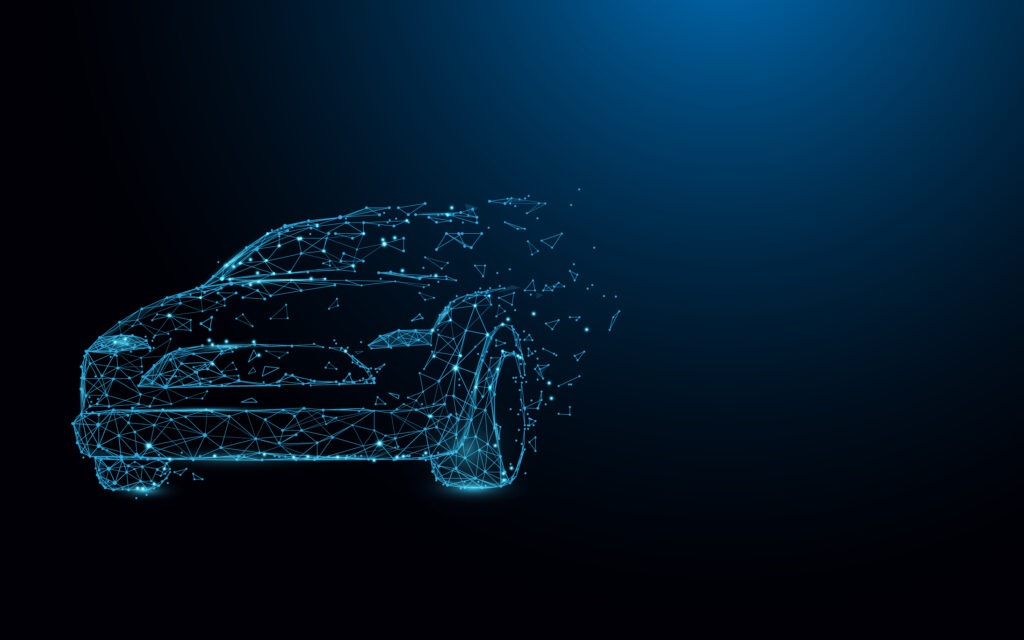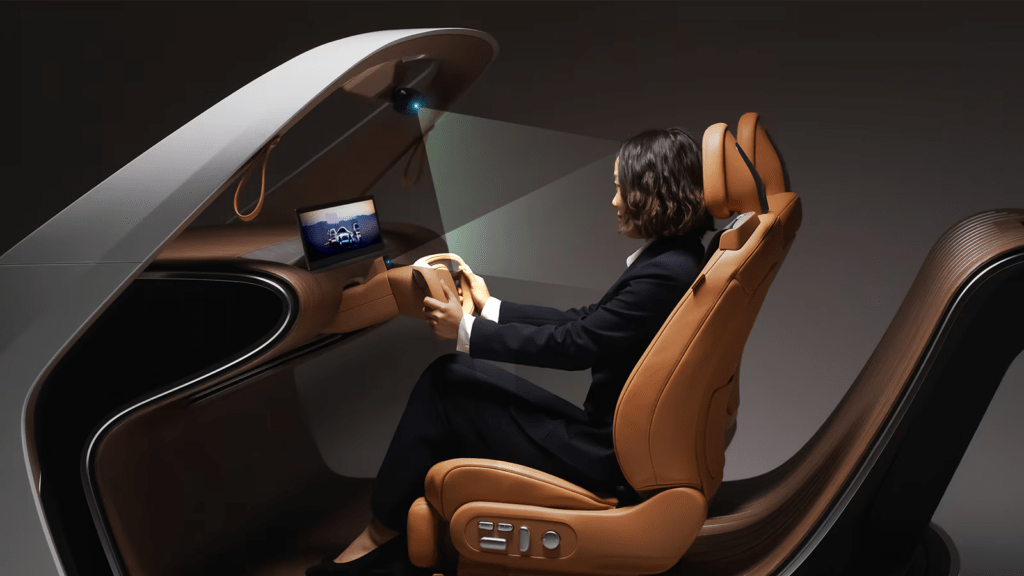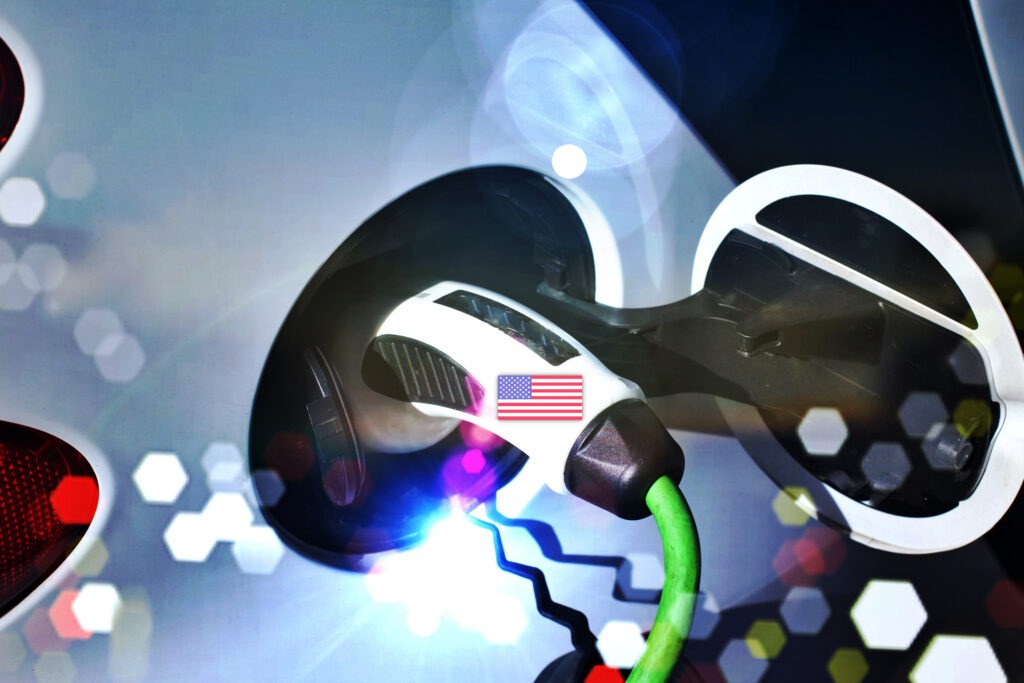CES 2025: Automotive suppliers focus on software and safety
14 January 2025

With a long list of automotive suppliers making the trip to CES, what major announcements were made in Las Vegas? Tom Hooker, Autovista24 journalist, reviews the event.
There was a noticeable lack of carmakers at this year’s CES. However, there was no shortage of suppliers in attendance. These companies unveiled the latest advancements in software-defined vehicles (SDVs), in-cabin user experience, AI and safety solutions.
Multiple collaborations were also announced as carmakers and technology companies found more common ground in SDVs. Blackberry, Amazon Web Services (AWS), Snapdragon and Qualcomm all look set to increase their automotive presence.
AI in-cabin experience
LG was one of the first companies to host a press conference at this year’s CES. The brand focused on its ‘Affectionate Intelligence’ approach. This AI is designed to better understand and empathise with customers while delivering a more personalised experience.
This theme was apparent in its AI-based in-cabin sensing solution, the AI in-vehicle experience. The concept is designed to make driving safer and more convenient. It leverages LG’s Vision AI to detect and respond to occupants’ needs while optimising cabin conditions.

The solution adapts to each driver’s preferences and provides tailored services. This includes personalised driving routes, real-time updates on road conditions, and information on nearby infrastructure as well as points of interest.
LG’s demonstrated these capabilities during its press conference. The system proactively suggests rerouting to avoid an accident. It also recommended holding a video conference inside the vehicle due to traffic delays.
‘With LG’s Affectionate Intelligence technology, LG’s in-cabin solution provides automakers with performance, quality and flexibility, while providing drivers and passengers with a safer and more enjoyable on-road experience,’ said Seokhyun.
Important automotive partnerships
This solution is made possible by analysing the driver and the vehicle’s interior. This is carried out using two systems, the driver monitoring system (DMS) and the driver and interior monitoring system (DIMS).
The former was developed with semiconductor AI company Ambarella, using its CV25 AI system-on-chip. DMS can detect a user’s physical health and emotional state with heart rate monitoring and facial expression recognition. It can notify the driver if they become distracted or drowsy while alerting them to their overall well-being.
‘Our collaboration with Ambarella represents a major step forward in the use of AI-driven technology to advance vehicle safety,’ stated president of LG vehicle solution company, Eun Seokhyun.
The company is also working with Qualcomm on a cross-domain controller platform for vehicles. This incorporates LG’s in-vehicle infotainment system and advanced driver-assistance system (ADAS) into a single controller.
A personalised cabin at CES
Garmin presented its highly personalised Unified Cabin 2025. The system boasts an ultra-wide front display, with a total of six screens and four seats in the interior concept.

Generative AI supports theme customisation based on user inputs and a personalised voice assistant is available for each seat. Using ultra-wideband technology, the system can detect if seats are occupied by adults or children based on breathing patterns. There are also customisable cabin lighting and unique audio streams. These features are all run from a single Garmin control module.
‘Garmin Unified Cabin has resonated strongly with global automakers because there is nothing else like it on the market today. This scalable solution can be customised to meet the needs of premium and mainline brands and includes a growing number of cabin electronics running off a single system on chip,’ explained executive vice president and managing director for Garmin Automotive OEM, Matt Munn.
The Unified Cabin 2025 is powered by Qualcomm Technologies’ Snapdragon cockpit elite platform, enabling an SDV architecture.
‘This next-generation digital cockpit solution offers automakers unparalleled entertainment and personalisation for their vehicles, setting a new standard for software-defined vehicle architecture,’ commented group general manager, automotive, industrial and cloud, Qualcomm Technologies, Nakul Duggal.
Multitude of collaborations
LG and Garmin were just two of Qualcomm’s automotive collaborations announced at CES. The company is currently working with Leapmotor, Mahindra, Hyundai Mobis, Alps Alpine and Royal Enfield. Using Snapdragon Digital Chassis, Qualcomm is developing in-cabin solutions and ADAS features in these partnerships.
Desay and Panasonic Automotive are also collaborating with the company using the Snapdragon elite-tier platform. Qualcomm and Amazon intend to work together on accelerating the integration of advanced AI technologies in vehicles.
This will allow carmakers, developers, and suppliers to deliver innovative and advanced in-car experiences while reducing development time and costs. This could include features such as Alexa.
‘As we continue to work with automakers to redefine automotive experiences that delight drivers and passengers, whether it’s through Alexa or our content services like Audible and Amazon Music, it made sense to collaborate with a company renowned for building advanced automotive chipset platforms,’ said Amazon smart vehicles vice president, Anes Hodzic.
The two companies intend to optimise large language model-powered experiences in the car, while also leveraging the AWS cloud. This aims to provide manufacturers with a virtual development environment for Snapdragon automotive chipsets.
CES and safety
VinAI brought six different technologies to CES, each designed to make the driving experience safer and easier.
The company revealed the world’s first passive drunk-driving detection system that does not require a breathalyser. Instead, DrunkSense adopts a multi-sensor approach including facial behaviour tracking, vehicle control monitoring and air alcohol sensors.
VinAI also presented InteriorSense, a driver and occupant monitoring system. The safety solution analyses behaviour patterns and can alert the driver if they become distanced. Another solution inside the cabin is MirrorSense, the world’s first automatic mirror adjustment feature.
VinAI’s Jelly View was also on display, providing drivers with a transparent vision through the vehicle. This can be used to assess road conditions and avoid unexpected accidents.
Bosch’s future projects
Bosch shared its future ambitions and projects during its CES press conference. The company expects to generate sales of over €6 billion with software and services by the beginning of the next decade. It forecasts that its mobility business sector will generate around two-thirds of this sales revenue alone.
The German supplier also discussed how AI will play a pivotal role in its future. Almost 5,000 Bosch AI specialists are currently working on intelligent solutions, with 1,500 AI patents registered in the last five years. Additionally, the company’s own AI Academy has trained more than 65,000 associates.
New AI-supported systems from Bosch, include technology which allows cars to brake smoothly without jerking. The company is also developing solutions for new centralised architectures. This software can effortlessly manage all interactions between automotive electronics and the cloud.
Another digital innovation presented in the company’s press conference was Bosch’s wrong-way driver warning. This cloud-based system tracks cars as they approach entrance or exit ramps and can tell if a vehicle is moving in the permitted direction of travel. If it is moving the wrong way, a warning is issued to the driver.
A warning can also be sent to other drivers, alerting them that an approaching vehicle is travelling in the wrong direction.
Continental’s SDV innovations
Continental showcased its SDV innovations to enable safer, more efficient and customisable driving experiences. Its road-to-cloud ecosystem speeds up the development of vehicle software.
Additional software solutions on show included cabin sensing, holistic motion control, and smart device-based vehicle access to further progress SDV capabilities. All of these features were combined in Continental’s Intelligent demo car.
This vehicle analyses its environment while anticipating and interacting with its users. It combines AI algorithms with existing vehicle sensors. Meanwhile, touch-free access to the concept is enabled using biometrics.
This means the car recognises users even before they get into the vehicle. It interprets and processes facial and movement characteristics. For example, if the car is parked outside a supermarket, the boot will be opened for the driver on their return. It can also identify individuals who are not authorised to operate the vehicle and keep doors locked while a warning is activated.
‘The car is on track to become a smart device, similar to a cell phone, which will use biometric technologies to take the user experience to a new level of security and comfort,’ said head of architecture and network solutions at Continental Jean-François Tarabbia.
Continental’s invisible biometrics sensing display features a range of capabilities. This includes 3D-distance mapping for airbag deployment, seatbelt monitoring and contactless biometric sensing for heart rate tracking.
The company also presented a roadmap for future brakes. The supplier showed how brakes will be developed into smart systems without the use of hydraulics.
A strategic rebrand at CES
Blackberry renamed and relaunched its ‘Blackberry IoT’ division to QNX. The brand focused on vehicle soundscapes, digital cockpit development, and edge-to-cloud data services at this year’s CES.
For example, its QNX Cabin is an innovative framework that allows carmakers to virtualise the development of digital cockpits in the cloud. This allows architects and developers to design, test and refine every line of code in the cloud.
The approach means teams can collaborate across different locations, speeding up development workflows, streamlining processes and improving overall time-to-market.
‘Designing, developing and maintaining a digital cockpit is challenging, especially for globally deployed engineering organisations that rely on cloud-based development but still need safety, security and reliability,’ highlighted chief operating officer and head of product, engineering and services at QNX, John Wall.
QNX also announced its collaboration with Microsoft in Las Vegas. The companies aim to make the process of building, testing, and refining software within the cloud easier for manufacturers. This could accelerate the development of SDVs in the future.
Additionally, QNX is working with Vector and TTTech to collaborate, develop and market a foundational vehicle software platform in a multi-year partnership.




